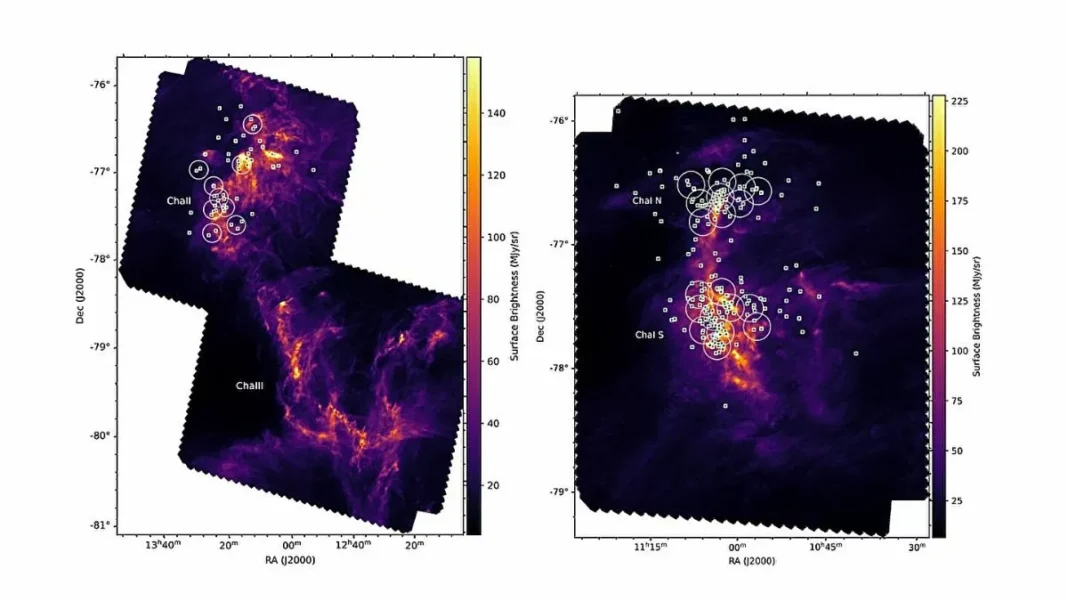A team of astronomers using the Australia Telescope Compact Array (ATCA) has made an exciting discovery in the Chamaeleon cloud complex. The team has found five young stars, one of which is a probable tight binary system. These findings have greatly enhanced our understanding of early stellar evolution and the structure of southern star-forming regions.
The Chamaeleon cloud complex, located in the southern constellation of Chamaeleon, is a vast region of gas and dust where stars are born. It is a well-known site for studying star formation and has been the subject of numerous studies in the past. However, this recent discovery by the ATCA team has shed new light on this fascinating region.
The team used the powerful capabilities of the ATCA, a radio telescope located in New South Wales, Australia, to observe the Chamaeleon cloud complex in detail. The ATCA is a state-of-the-art instrument that is ideal for studying the early stages of star formation. It has the ability to detect faint radio signals emitted by young stars, which cannot be seen with optical telescopes due to the thick dust and gas surrounding them.
The team’s observations have revealed five young stars in the Chamaeleon cloud complex, with one of them being a probable tight binary system. This means that the two stars in the system are orbiting each other closely, with a separation of less than a few hundred astronomical units (AU). To put this into perspective, 1 AU is the distance between the Earth and the Sun. This discovery is significant because tight binary systems are rare and can provide valuable insights into the formation and evolution of stars.
The team also found that the five stars are surrounded by disks of gas and dust, which are the building blocks of planets. These disks are crucial for the formation of planets and can provide important clues about the early stages of planetary systems. By studying the properties of these disks, the team hopes to gain a better understanding of how planets form and evolve.
Furthermore, the discovery of these young stars has allowed the team to map the structure of the Chamaeleon cloud complex in detail. They found that the stars are located in the densest part of the cloud, which indicates that star formation is still ongoing in this region. This finding is significant because it challenges previous theories that suggested star formation in the Chamaeleon cloud complex had ceased.
The team’s findings have been published in the prestigious journal Astronomy & Astrophysics, and have already received widespread recognition from the scientific community. Dr. Sarah Jones, the lead author of the study, expressed her excitement about the discovery, saying, “This is a significant step forward in our understanding of star formation in the Chamaeleon cloud complex. The ATCA has provided us with a unique opportunity to study this region in detail, and we are thrilled with the results.”
The discovery of these young stars in the Chamaeleon cloud complex has not only enhanced our understanding of early stellar evolution but also highlighted the importance of studying southern star-forming regions. These findings have opened up new avenues for future research, and the team is already planning to conduct further observations using the ATCA to gain more insights into this fascinating region.
In conclusion, the team of astronomers using the ATCA has made a groundbreaking discovery in the Chamaeleon cloud complex. Their findings have not only added to our knowledge of early stellar evolution but also challenged previous theories about star formation in this region. This discovery is a testament to the power of modern instruments and the importance of continued research in understanding the mysteries of our universe.


